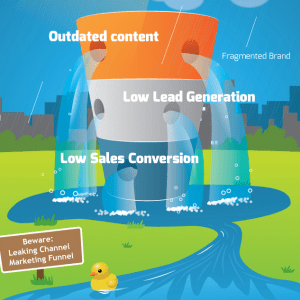Topics
Driving Better Results With The Right Content
 By Patricia Hume, Trapit
By Patricia Hume, Trapit
Editor’s note: Following is part one of a three-part series focusing on the importance of content discovery and curation for the channel. Part two will be published in the August 21 newsletter.
In the last blog post, we examined the importance of content to build mindshare through engagement, trust and thought leadership. Let’s now look at a few ideas on how to deliver real results with the right content.
In my experience, more than 80% of channel revenues for any given brand are delivered through less than 20% of the channel partners. And these partners are usually the top of the pyramid (platinum and gold levels). If you are experiencing Prado’s law, and I am pretty sure you are, then just imagine: If every one of the partners in your ecosystem was able to increase the number of deals they do each year by one, what would this mean for your bottom line?
Let’s look at simple math:
Supplier A has 500 channel partners. The average net revenue per deal is $10,000. If 400 (80% of the base) partners were able to produce one more deal per year that would result in $4 million per year.
Many would agree that the majority of partners who are part of a supplier’s ecosystem have limited marketing skills. It is difficult for these companies to build and execute inbound and outbound marketing plans. It takes time and money to create the content needed for web sites, white papers, blogs, email campaigns and webinars. While the supplier assists through MDF, co-marketing plans, campaigns in a box, and more, it is still not sufficient in driving enough leads to sustain substantial year-over-year growth for these smaller companies.
How can suppliers activate more successful results for their channel as a whole? It is simple: Help them be better at digital marketing.
Let’s examine three areas where suppliers can help partners.
1) Web Site
2) Blogs
3) Social Selling
All great marketing teams leverage the web site as their number one sales asset. This is where prospects learn about a company, its offerings, its culture and its people.
Blogs are leveraged by organizations to educate, provide insight, become thought leaders and industry experts, etc.
And social selling is a great way to use social media to reach your audience and increase your revenues.
The common denominator across all three is the need for highly relevant, engaging and inspiring content. And while content is provided from the supplier, it is not sufficient. Brand content is needed but does not solve the challenges that partners face. Content needs to be relevant to the partner’s brand and voice, and it must be unique to them. They cannot succeed reusing all the content that everyone else is leveraging in their marketing activities or re-tweeting content from the supplier while getting lost in the echo chamber. Content must be applicable, abundant, personalized and easy-to-disseminate.
Using curated content is a great way to solve the content gap issue. Curated content provides suppliers and partners with a vast collection of information that will drive better engagement. Partners can use curated content on their web sites. There are companies that fuel their entire web site with curated content and receive great results as measured in site visits, engagement and followers. They can use it to write blogs about industry news. In fact, blogs do not have to be written in house. They simply have to be relevant, original and on-message. They can leverage it while targeting prospects via social selling.
And social selling is a must. It is easy-to-do and a great way to drive revenue growth. The statistics prove it. For instance, according to the Aberdeen Group, 73% of salespeople who used social selling techniques met or exceeded quota in 2012.
Some steps to ROI:
- The supplier (or VAD) should find the right technology that provides a complete and easy-to-use content curation solution from discovery to curation and publishing through analytics.
- The supplier (or VAD) should provide curated content to its channel based on the channel location (make it local), business model, area of expertise and industry so that the content is relevant and useful to the partner and, in turn, to the partner’s prospects.
- The partner should leverage this content by publishing to their web site, to their blogs and through social media. With the right content, it is easier to engage your prospects and build trust and authority.
- The partner needs to learn how to be socially active and sell using social selling best practices.
Net: More leads, more revenue and a more self-sufficient channel with better marketing results.
Suggested approach:
- Suppliers (or VADs) should start with the mid-tier partners who have enough resources to drive results. You might call these your silver partners.
- It is important to build a content management strategy for them considering what they need based on their profiles. Once defined, you need to use your content curation application to discover, curate and deliver the content they need.
- Identify if your content curation vendor provides best practices on how to leverage curated content and if so, use these. They can teach you how to leverage curated content in web properties, blogs and across social media. You need to build for scale and repeatability — the only thing that should differ across partner types and partner levels is the content itself.
- Set a timeline for rollout and measurable KPIs:
- Increase in visits to partner’s website
- Increase in number of followers across partner’s social media channels
- Increase in number of leads
- Higher partner satisfaction
- More revenue/partner
In the next blog, we will provide an overview of Trapit, Inc. and why you should see a demo and consider Trapit as your content curation application for you and your channel partners.



![Simplifying Local Marketing For Brands [Infographic]](https://channelmarketerreport.com/wp-content/uploads/2014/04/IG_primary-image-300x300.png)

![Going Viral [Infographic]](https://channelmarketerreport.com/wp-content/uploads/2014/10/Viral-Marketing-infographic-300x300.jpg)








